| |
| March
2007 |
Mid-Atlantic
Wineries: a Photo Journal |
|
|
| |
Vineyards and wineries on the East Coast? Actually, each and every state in the U.S. grows grapes for wine. But, it is the East Coast (and Virginia in particular) that is considered the birthplace of American wine. No, the wines from this region weren't powerhouse examples of fruit, or blockbusters of extraction and texture, ala California. But, what they were was somewhat leaner, less alcoholic - almost more delicate or elegant, if paradoxically, a bit backward. In fact, they seemed to me to be a something of a bridge between "old world" and "new world," almost in direct proportion to their geographic location between Europe and California.
During my visit to 3 Mid-Atlantic states, I found myself asking these folks, "Why here?" I was certain that the winemakers must all be native to their respective areas - a few were, but the vast majority were not. I wondered (sometimes aloud) if these talented people somehow felt like they were playing in the Minor Leagues by not heading West. They indulged me, and down to the last person explained that the challenge of growing wine here held its own rewards. One of them did admit that they were indeed the Minor Leagues - but, hastened to add they were not making Minor League wines. By the end of the trip, it was beginning to sink in, "these guys aren't undiscovered - they're just hiding out! I'll bet they're part of some winegrower-witness relocation program."
|
 |
 |
 |
 |
| Above: Chaddsford Winery, in Chad's Ford, PA. Owner Eric Miller discusses his 200 yr-old former dairy barn, once part of the original William Penn Estate. Most of the wines are bottled as varietals: Pinot Grigio, Chardonnay, Pinot Noir, Cabernet Sauvignon, Chambourcin, and Merlot - mostly from Estate or local vineyards, though the '05 Pinot Grigio was 70% outsourced from New York. |
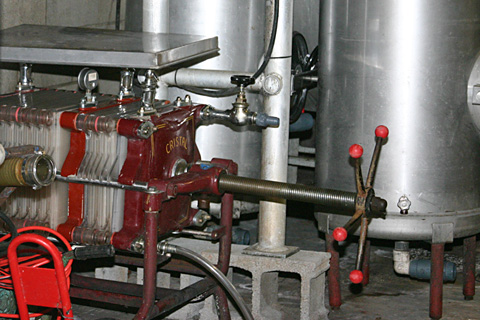
|
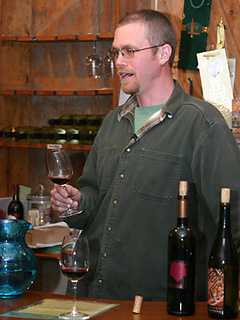 |
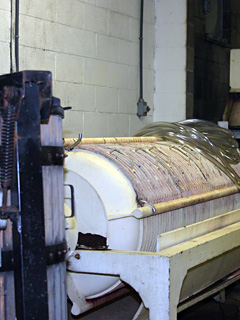 |
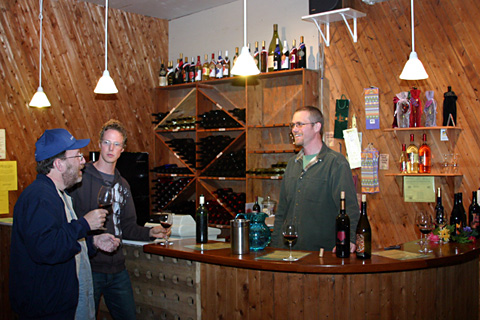 |
| Above: Allegro Vinyards, in Brogue, PA. Located in York County (ironically now a dry county for new wineries). Owner and winemaker Carl Helrich talked about the Chardonnay and Cabernet Sauvignon planted in 1973. Purchased in 1978 by John and Tim Crouch, a winery building was built in 1980, and tasting room in 1981. |
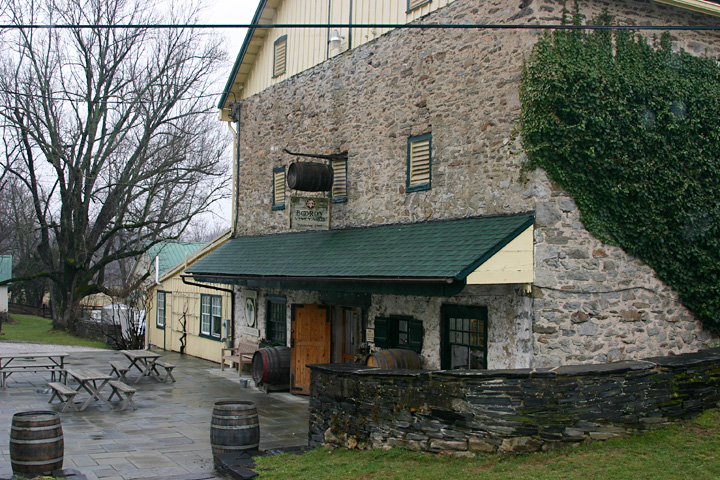 |
|
 |
Above: Boordy Vinyards, located in Hydes, MD. Founded by Philip and Jocelyn Wagner, known for introducing new varieties of French hybrid grapevines throughout the United States in the 1930s. They established Maryland’s first commercial winery in 1945. Since 1980, Boordy has been owned by the R.B. Deford family, and is located on their historic 240-acre farm in the Long Green Valley of northeastern Baltimore County. The winery is housed in a 19th century stone barn whose thick walls keep the wine at cellar temperatures throughout the year.
|
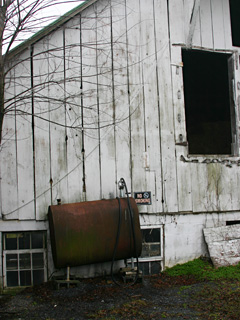 |
 |
 |
| Above: Black Ankle Vineyards, Mt. Airy, MD. Ed Boyce and wife Sarah O'Herron purchased a 146-acre farm in Frederick County in 2002a, with about 40 acres suited to grape vines. The site was sloped, well-drained and had low vigor soil. Beginning in 2003, they planted a block of red varieties: Syrah and the five Bordeaux reds (Cabernet Sauvignon, Cabernet Franc, Merlot, Petit Verdot, Malbec). In 2004 they added additional acreage of Cabernet Sauvignon, Cabernet Franc, Merlot and Syrah as well as a small parcel of Pinot Noir. In addition, they planted some interesting white varieties: Gruner Veltliner, Albarino, Viognier, and Chardonnay. They also decided to practice Biodynamics. |
| |
|
|
| March
2007 |
Mid-Atlantic
Wineries: a Photo
Journal |
|
|